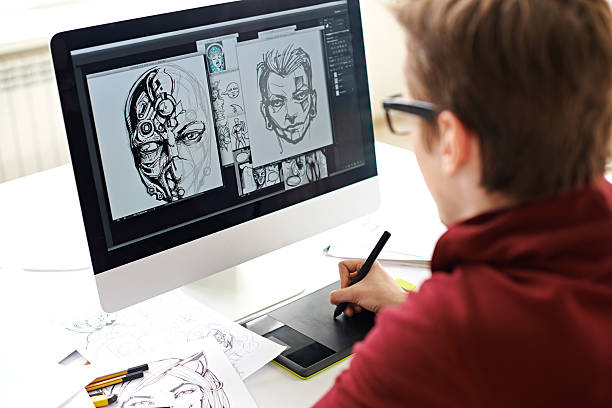Table of Contents
Rapid technological advancements and shifting audience preferences have led to a significant evolution in animation, requiring updated skills in animation courses.

Emerging Technologies in Animation
The emergence of new technologies is causing a seismic shift in the animation industry. Animation is now incorporating virtual reality (VR) and augmented reality (AR), which provide immersive experiences that were unthinkable ten years ago. Animators using these technologies must be skilled in real-time rendering and 3D modeling. Beyond that, animators can now concentrate on their creative work because Artificial Intelligence (AI) and Machine Learning (ML) are playing important roles in automating repetitive tasks. Professionals now need to know how to use software that uses AI and ML to improve output quality and streamline workflows. Another significant trend is the integration of cloud computing into the animation workflow, which creates a new benchmark for effectively rendering large-scale animations and permits collaborative projects across geographical boundaries.
The Rise of Streaming Platforms
The emergence of streaming services has changed how people consume content and had a significant effect on the animation sector. An unprecedented demand for original animated content is being created by platforms such as Netflix, Disney+, and Amazon Prime. This has affected the kind of content being created and increased employment opportunities for animators. Diverse, excellent stories that appeal to a worldwide audience are now prioritized. Modules on content creation for these platforms are becoming a part of animation courses, with a focus on viewer engagement, storytelling, and pacing. In order to make their work flexible and available on a variety of platforms, these courses also teach students how to modify their animation styles to fit various formats and screen sizes.

Importance of Sustainability in Animation
An increasingly important consideration in the animation sector is sustainability. From employing sustainable materials in stop-motion animation to utilizing energy-efficient hardware, studios are progressively embracing environmentally friendly practices. Today&8217;s animation students need to understand these techniques and be able to incorporate them into their workflows. Concerns about the environment and growing consumer demand for ethical production methods are the main forces behind this shift towards sustainability. Sustainable design and production techniques are now covered in animation courses, encouraging students to think creatively about ways to cut waste and energy use without sacrificing quality. For aspiring animators, knowing the lifecycle of animated projects and their effects on the environment is becoming crucial.
Expanding Role of Soft Skills
In animation, soft skills are just as important as technical skills. As the complexity and scale of animation projects increase, teamwork, communication, and problem-solving skills become more and more crucial. Recognizing this, animation courses are emphasizing the development of these soft skills more. For large-scale projects to be completed successfully, effective teamwork and the capacity to express innovative ideas are essential. Group projects, peer reviews, and workshops are now incorporated into courses to help students refine these abilities. Additionally, considering the worldwide scope of today&8217;s animation projects, cultural competency and the capacity to collaborate with diverse teams are becoming increasingly important.
Focus on Indie and Experimental Animation
Accessible technology and distribution platforms have made it easier than ever to enter the animation industry. As a result, independent and experimental animation has grown in popularity, allowing producers to push the limits of traditional narrative. In order to adapt, animation courses are now providing modules that encourage students to think creatively and find their own voices. These courses teach students how to independently market and distribute their work in addition to covering the technical aspects of animation. Animation schools are preparing students to contribute significantly to the diverse field of independent animation by placing a strong emphasis on creativity and originality.

Conclusion
Animation has a promising and exciting future. The production and consumption of animations are being completely transformed by emerging technologies like VR, AR, and AI. The demand for diverse, high-quality content is being driven by streaming platforms, which are also creating more job opportunities and influencing the stories that are told through animation. In order to ensure that the industry develops in an environmentally responsible way, animators are being encouraged to embrace responsible production practices by a focus on sustainability. Soft skills, which equip animators to collaborate and perform well in complex environments, are becoming more and more important. Lastly, the emergence of independent and experimental animation is promoting creativity and innovation by giving voice to new voices.
The need for modern and thorough educational curricula is highlighted by the changes in the animation industry. In response to these new demands, animation courses are adapting to give students the abilities they need to succeed in a world that is changing quickly. The role of the animator will become even more crucial as audiences seek out more complex and varied content and technology continues to advance. Future animators will be prepared to guide the field into its next exciting chapter by embracing these new trends and learning the required skills.